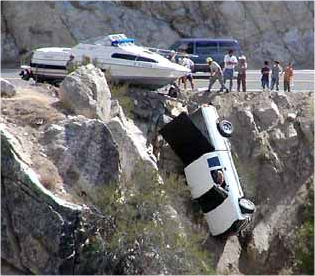
Defensive Sailing - Defensive Sailing
Initial Report
The principle of defensive driving is long established. The techniques can help protect road users from unexpected hazards, including wrongful actions by other drivers. Similarly, “defensive sailing” can help protect us from marine perils, including the failure of other mariners to keep a proper look-out or to apply the ColRegs correctly. This in no way condones such failures, but, rather provides some self-protection against them.
In the CHIRP comments on reports about close-quarters situations, we endeavour not only to comment on actions that the give-way vessel should have taken but also “defensive sailing” measures that the stand-on vessel could perhaps have applied.
Below are some suggestions of basic tenets of defensive sailing which apply to all types of vessels, from large commercial vessels to yachts:
- Keep A Good All-Round Look-Out
Sounds obvious but is absolutely fundamental. Watch-keepers on commercial vessels need to bear in mind that small craft may not be easy to see either visually or on radar, especially in moderate/rough sea conditions. This may be so even though the craft is showing lights as per the ColRegs and has a radar reflector.
- Maintain Situational Awareness
In particular, be aware of how quickly a traffic situation can change. For yachtsmen, it is useful to remember that ships travel a distance equivalent to 10% of their speed in 6 minutes. So a ship proceeding at 15 knots that appears to be some way off at 1.5 miles can be with you in 6 minutes (and less, of course, if you are moving towards it.)
- Don’t Assume You Have Been Seen
As per ColReg 36: “If necessary to attract the attention of another vessel any vessel may make light or sound signals that cannot be mistaken for any signal authorized elsewhere in these Rules, or may direct the beam of her searchlight in the direction of the danger in such a way as not to embarrass any vessel.”
- Think “What If … “
Think beforehand what you would do to avoid the danger if the other vessel takes unexpected action or does not comply with the ColRegs?
- Allow A Prudent Margin of Safety and Respect the Other Vessel’s Safety Margin
Consider the situation as it will be perceived from the bridge or cockpit of the other vessel and endeavour not to cause anxiety to the other mariner.
This is obviously not a comprehensive treatise on the subject. We would welcome any comments from readers and, in particular, reports of incidents from which lessons can be learned.

An illustration, albeit tenuous, of the link between the subjects of Defensive Sailing and Defensive Driving. We are always pleased to receive photographs with reports, even though they may not be as dramatic as this incident!